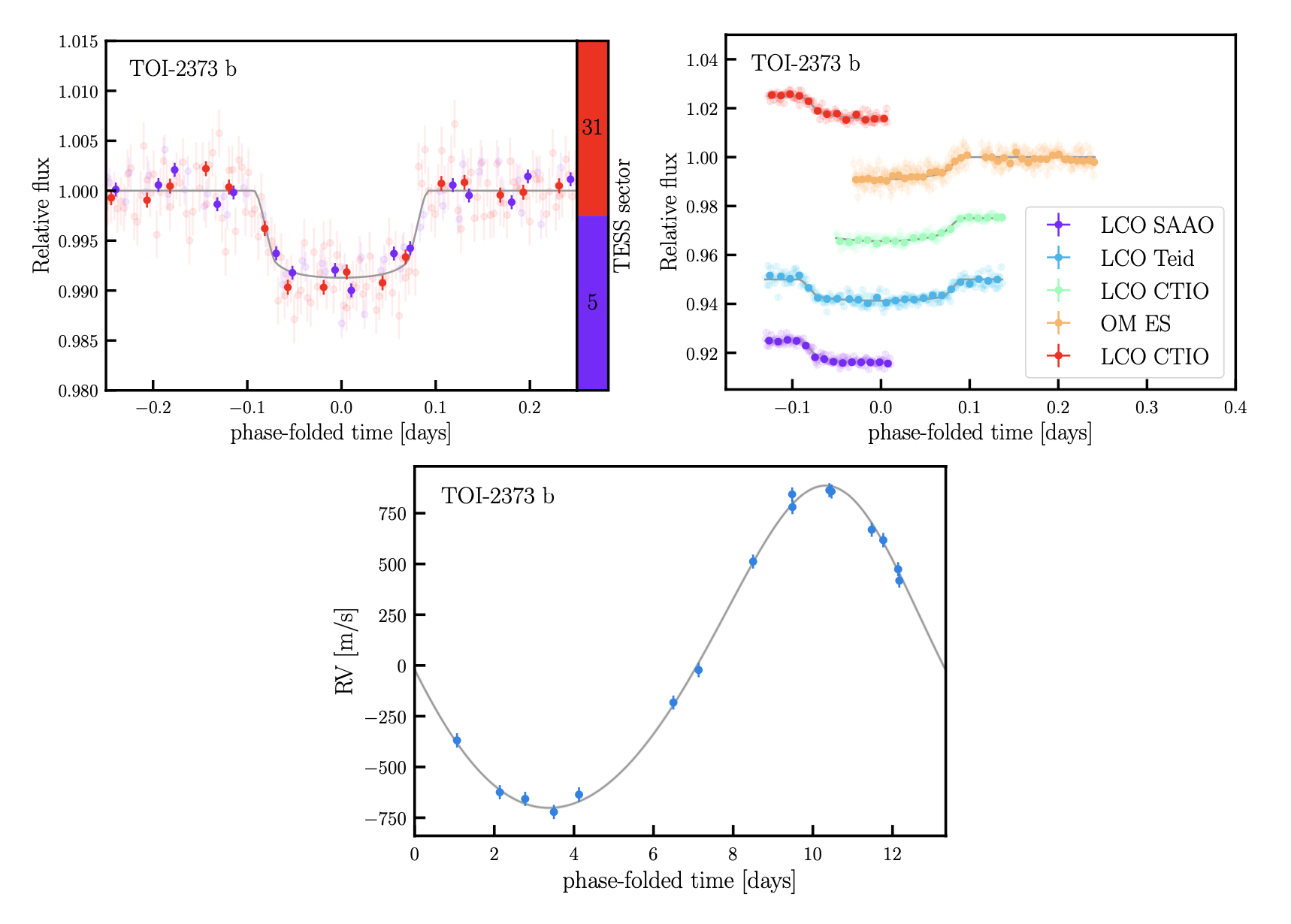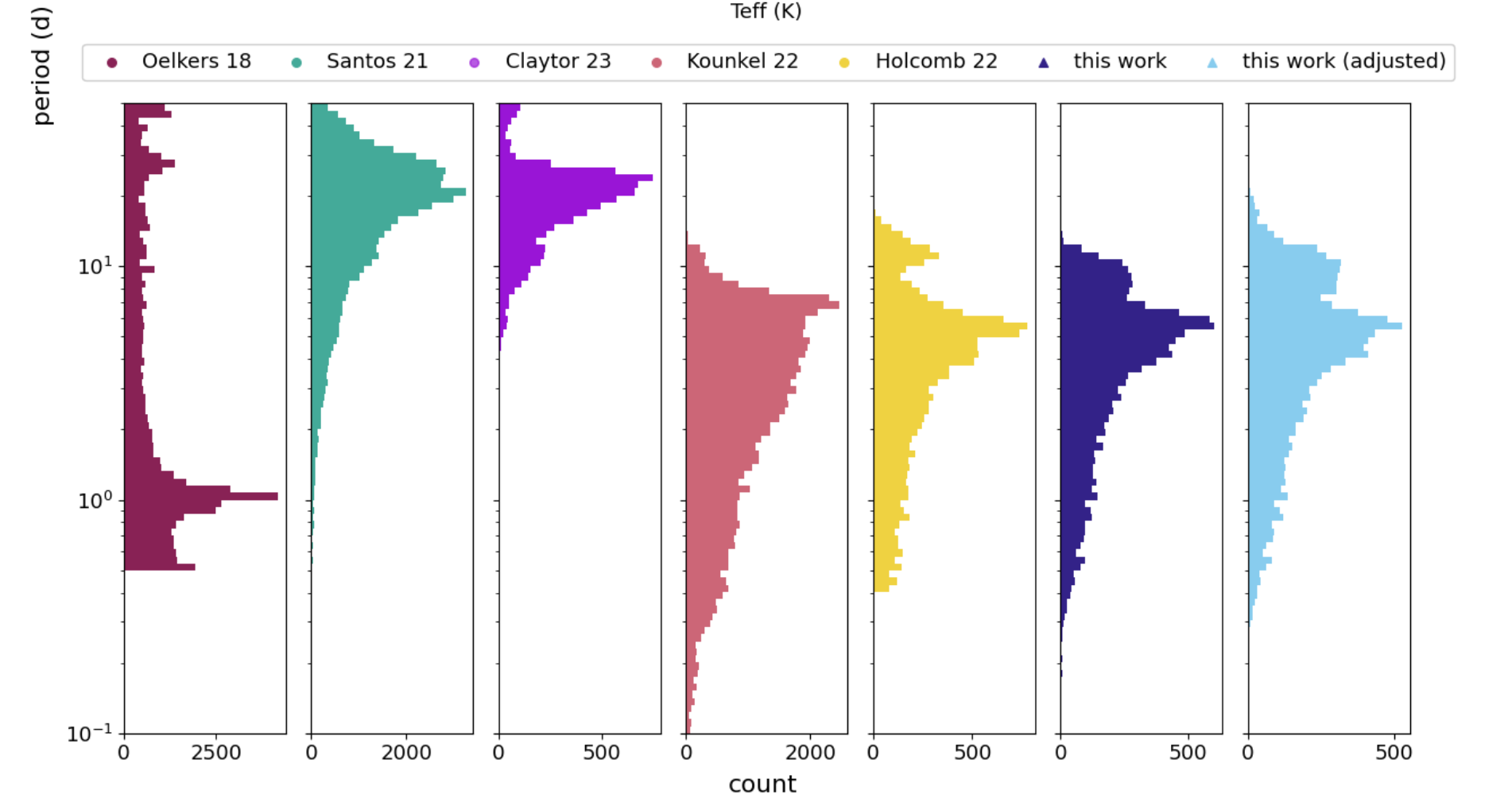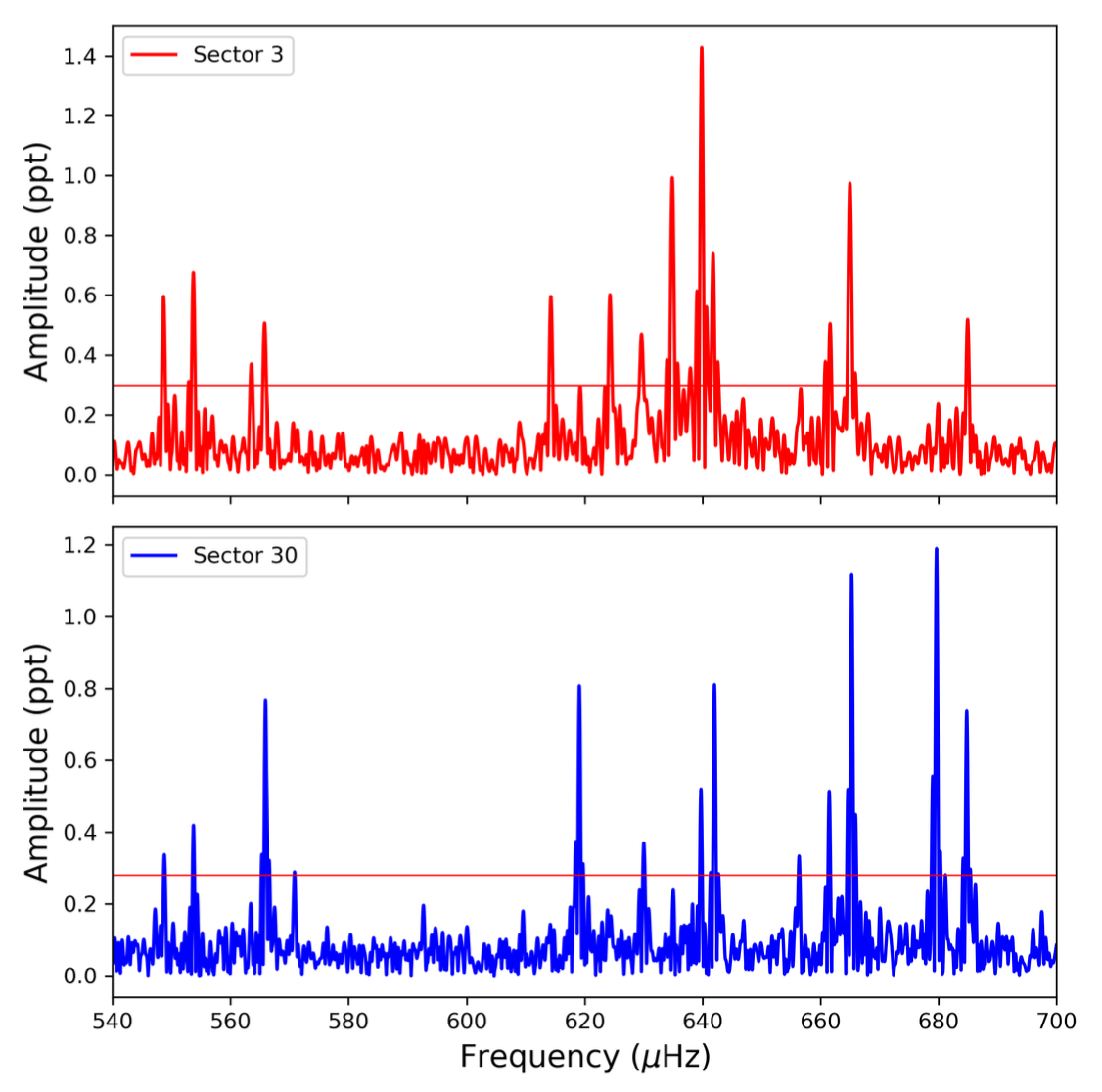Welcome TESS followers to our latest news bulletin!
This week, we are looking at three recent papers from the archive. Enjoy!
Three Warm Jupiters around Solar-analog stars detected with TESS (Eberhardt et al. 2024) :
Massive planets on relatively short-period orbits provide important information about the processes and mechanisms responsible for the formation and evolution of planetary systems. Of these, warm Jupiters are generally considered to be sufficiently far away from their parent stars that tidal interactions are expected to be weaker. Eberhardt et al. (2024) present the discovery and characterization of three new warm Jupiters, TOI-2373 b, TOI-2416 b, and TOI-2524 b, based on TESS data and ground based follow-up observations, and as part of the Warm gIaNts with tEss (WINE) survey. The targets were observed by TESS in Sectors 2, 3, 4, 5, 8, and 9 at 30-min cadence, and then again in Sectors 28, 29, 30, 31, 35, 38, 45, and 46 at 2-min cadence, and produced clear, periodic transits that passed all Data Validation tests. To complement the TESS data, the authors obtained photometric and spectroscopic observations from ASTEP, LCOGT, the Evans 0.36 m telescope, Observatoire Moana, SOAR, and FEROS, and performed combined analysis of all available data with the Exo-Striker code. Eberhardt et al. (2024) argue that all three host stars are similar to the Sun, with effective temperatures between 5651 K and 5831 K, masses between ~1 and ~1.1 MSun, radii between ~1.1 RSun and ~1.2 RSun , and ages between ~4.9 Gyr and 6.7 Gyr; one of these has a Solar metallicity while the other two are have metallicities of ~0.3 [Fe/H] (dex). For the TOI-2373 b, TOI-2416 b, and TOI-2524 b planets, the authors measure orbital periods of 13.3 days, 8.3 days, and 7.2 days, respectively, radii of 0.88RJup, 0.9 RJup, and 1 RJup, masses of 9.3 MJup, 3 MJup, and 0.6 MJup, and corresponding orbital eccentricities of ~0.1, ~0.3, and 0. Thanks to TESS, Eberhardt et al. (2024) were able to detect three new warm Jupiters, one of which is the densest planet known at the time of writing (TOI-2373 b).
Methods for the detection of stellar rotation periods in individual TESS sectors and results from the Prime missiona (Colman et al. 2024) :
Stellar rotation is one of the key ingredients in our understanding of stellar formation and evolution, and provides vital constraints on the ages of stars through the process of gyrochronology. Colman et al. (2024) present a comprehensive analysis of rotational variability in stars observed at 2-min cadence by TESS in Cycles 1 and 2 (Sectors 1 through 26). The authors developed a custom pipeline to investigate 194,336 distinct FGKM dwarfs spread across 432,704 Sectors and selected according to the following constraints: (i) effective temperatures T <= 7,000K; (ii) fainter than T = 5 mag (to avoid saturation issues); and (iii) brighter than T = 16 mag (to ensure robust detection of relevant lightcurve features). Additionally, the authors Colman et al. (2024) focus their period search on individual Sectors, with a theoretical limit of ~12 days imposed by the data downlink gaps in each Sector. For vetting purposes, the authors utilize a random forest classifier based on lightcurve data only (the classifier has no knowledge of magnitudes, effective temperatures, etc) and trained on period measurements obtained from KELT and TESS Full-Frame Image lightcurves. Colman et al. (2024) performed Lomb-Scargle and autocorrelation function analysis to detect stellar rotation in 17,110 lightcurves; 16,800 of these (across 11,010 targets) passed all their vetting tests. The authors argue that the overall fraction of detected rotation periods is 3.75% for all sectors analyzed, corresponding to 5.82% of all targets analyzed, and note that while most of the detected periods are shorter than 12 days, many stars are likely rotationally-variable on longer timescales. Indeed, the authors indeed found 30 potential rotation periods longer than 12 days by performing visual inspection. Overall, capitalizing on 2-min observations from TESS, Colman et al. (2024) created a catalog of rotation periods for 10,909 FGKM dwarfs of which 4,936 are new detections.
Pulsating hydrogen-deficient white dwarfs and pre-white dwarfs observed with TESS VI. Asteroseismology of the GW Vir-type central star of the Planetary Nebula NGC 246 (Calcaferro et al. 2024) :
NGC 246 is a planetary nebula with a slightly elliptical shape, at the center of which is a hierarchical triple stellar system. This unique system consists of the primary HIP 3678 A, a PG 1159 pulsating white dwarf with an estimated effective temperature of Teff ~ 150,000K and log(g) ~ 5.7, and the likely low-mass K- and M-type main sequence secondary and tertiary stars HIP 3678 B and C. Calcaferro et al. (2024) present a detailed asteroseismic analysis of HIP 3678 A based on TESS data from Sectors 3 (at 120-sec cadence) and 30 (at 120-sec and 20-sec cadence). The authors note that the two major sources of contamination are the resolved tertiary star HIP 3678 B (at angular separation of ~4 arcsec and magnitude difference of deltaT = 0.6 mag) and the nearby field star TYC 5272-1854-1 (separation of ~56 arcsec and magnitude difference of deltaT = -1.2 mag), and argue that neither these nor the nebula itself are a significant source of contamination. Calcaferro et al. (2024) computed Fourier transforms of the lightcurves, extracted 17 distinct periodicities in the range of ~1460 to ~1823 sec (associated with non-radial g-mode pulsations), and found no indications of rotational multiples. Thanks to TESS data, the authors were able to measure a constant period spacing of 12.9 sec and constrain the mass of the primary star of NGC 246 to be either 0.87 MSun (if the period spacing is associated with l = 1 modes) or 0.57 MSun (if the period spacing is associated with l = 2 modes), with the latter being more consistent with Gaia measurements.

Fig. 1: Taken from Eberhardt et al. (2023). Upper left panel: phase-folded TESS observations and respective best-fit model for the warm Jupiter TOI-2373 b. Upper right panel: corresponding follow-up ground-based photometry from several facilities as indicated in the legend. Lower panel: measured radial velocities.

Fig. 2: *Taken from Colman et al. (2024). Comparison between measured rotation periods in TESS data from Colman et al. (2024) (first and second panels from left) and previous results (as labeled on the figure). *

Fig. 3: Taken from Calcaferro et al. (2024). Fourier transform of the TESS lightcurve of NGC 246 for Sector 3 (upper panel) and Sector 30 (lower panel). The horizontal red line represents the 0.1% false alarm probability.